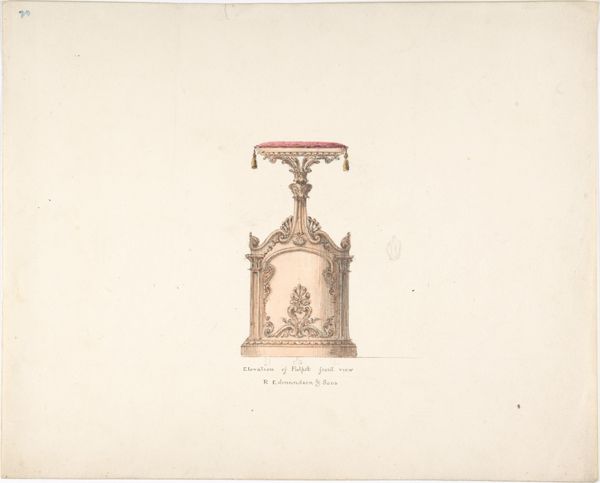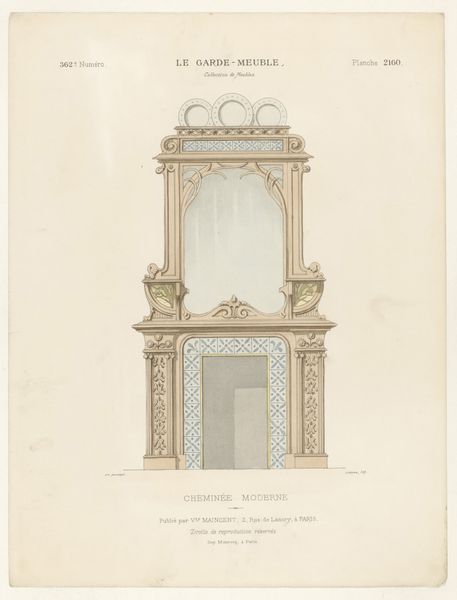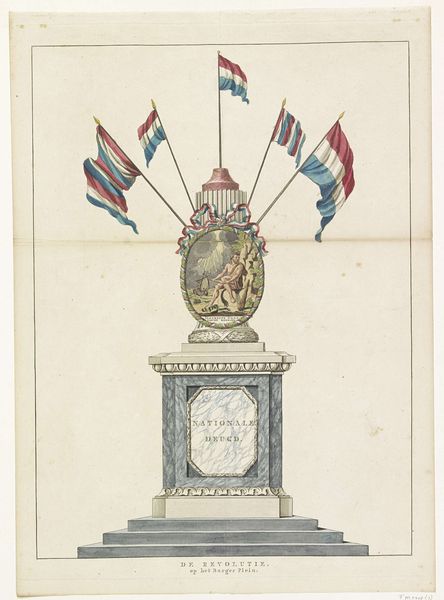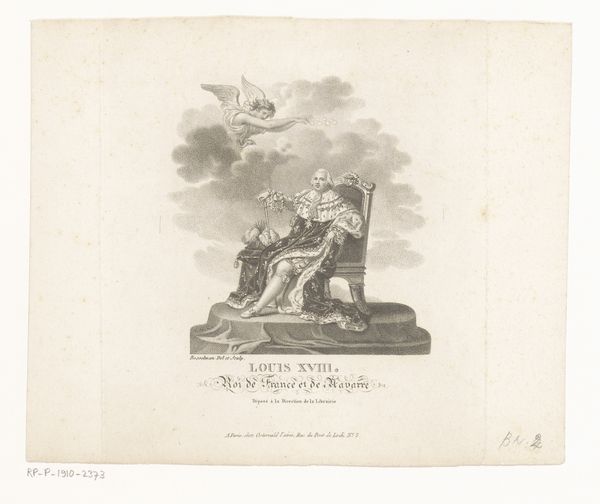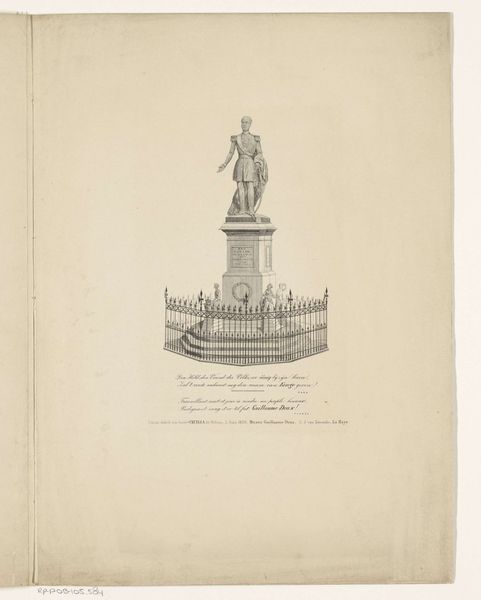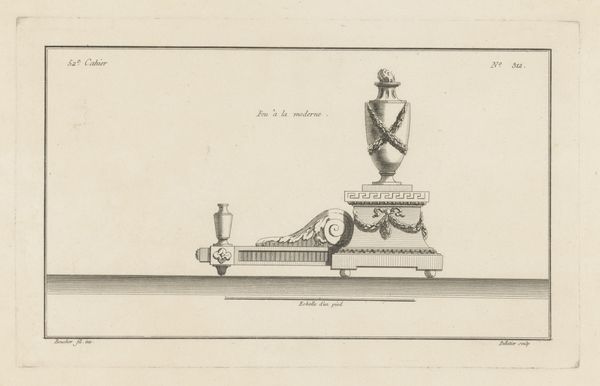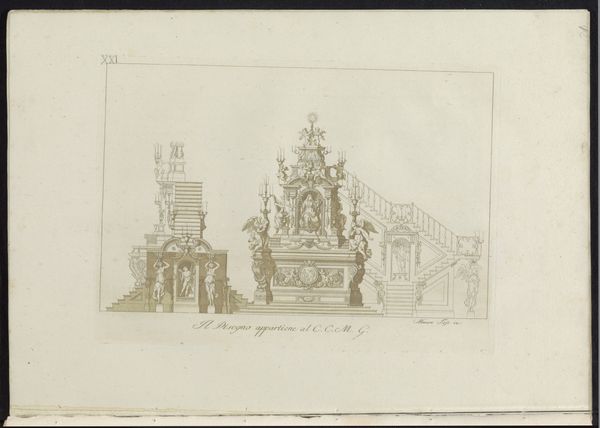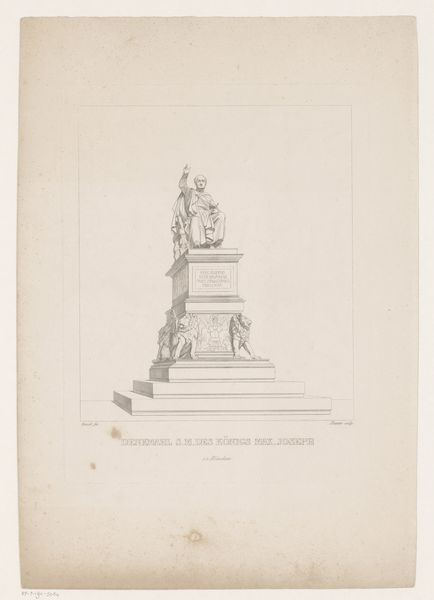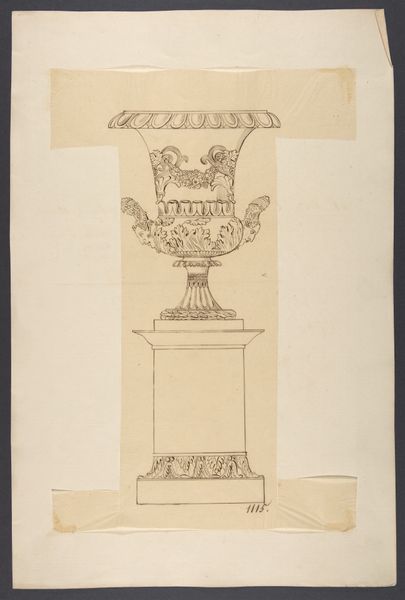
Elevation of a Pulpit, Side View, R. Edmundson & Sons 1815 - 1840
0:00
0:00
drawing, print, etching, watercolor, architecture
#
drawing
# print
#
etching
#
old engraving style
#
etching
#
form
#
watercolor
#
line
#
academic-art
#
watercolor
#
architecture
Dimensions: sheet: 9 1/2 x 11 7/8 in. (24.1 x 30.2 cm)
Copyright: Public Domain
Editor: So this is "Elevation of a Pulpit, Side View, R. Edmundson & Sons," a watercolor, etching and drawing from sometime between 1815 and 1840. It's surprisingly delicate, given that it's an architectural plan. What do you make of it? Curator: This image foregrounds the labour involved in architectural design, right? We often separate ‘art’ from practical craft, but here the meticulous rendering, the very hand that drafts this pulpit, becomes central. Consider the materiality of its making: the paper, the pigments painstakingly applied... It underscores the social context; religious spaces commanded significant resources. How does the scale of the adornment speak to this? Editor: Well, it seems pretty ornate, but maybe restrained for the period? There is the lush red cushion on top, but the rest is mostly line drawing. Curator: Exactly! That interplay of opulence, suggested by the detailing, with the comparative austerity of the rendering – the etched lines, the wash of color – hints at a negotiation. Labor creates objects. Religious institutions also create specific subjectivities, and what about that tension, of display, yet perhaps also modesty in faith? Who are Edmundson & Sons trying to reach with this design, and with what materials are they selling this "elevation"? Editor: That makes me wonder about the intended audience – clergy? Patrons? Also, how the choice of watercolor and etching might have impacted perceptions of the design compared to say, an oil painting of it. Curator: Precisely! The medium *is* the message, or at least an important part of it. It makes me think of the economic forces driving these aesthetic choices, and the labor that is needed. How are sacred spaces themselves commodified through design and presentation? Editor: It's fascinating to think about something seemingly functional like a pulpit elevation as this site where artistic labor, religious ideology, and social status all intersect. I’ll never look at architectural drawings the same way! Curator: Indeed! Seeing the process of making allows us to understand production of the sacred space within specific socio-economic relationships, rather than as the solely divine.
Comments
No comments
Be the first to comment and join the conversation on the ultimate creative platform.
